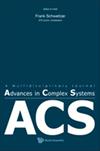The General Ownership Structure of the European Aerospace Industry a Statistical and Network Analysis
IF 1
4区 数学
Q4 MATHEMATICS, INTERDISCIPLINARY APPLICATIONS
引用次数: 2
Abstract
In this paper, we investigate the ownership structure of the 3143 EU28 aerospace companies in 2019, and extend the analysis to the 2428 neighbor partners outside EU28 and/or aerospace. Different from the previous studies, we consider all equity capital flows regardless of their size, and their monetary value instead of the corresponding ownership share. We further innovate by applying new methods to measure degree of influence power and hierarchical structure. The resulting picture shows that between the pure EU28 aerospace companies: (i) ownership relationships concern only relatively few companies (10%), which trigger horizontal and vertical structures; (ii) density is extremely low; (iii) relationships are fully hierarchical with no cross-ownership; (iv) capital is seldom transferred across business groups; (v) most of the main topological parameters have a typically polarized scale-free structure. When including also the ownership neighbors, some of those traits change substantially: (i) the share of connected companies substantially grows up to 63%; (ii) size and length of the largest pyramidal structures will grow remarkably, reaching a top of 874 companies; (iii) the industry becomes a full small-world structure, thus allowing huge capital transfer across business groups. Finally, a dramatic financialization, meant as a pivotal and quantitatively heavy role of financial operators, emerges also as a clear characteristic of the extended network.欧洲航空航天工业总体股权结构的统计与网络分析
本文研究了2019年欧盟28国3143家航空航天公司的股权结构,并将分析扩展到欧盟28国和/或航空航天以外的2428家邻居合作伙伴。与以往研究不同的是,我们考虑所有的权益资本流动,无论其规模大小,以及其货币价值,而不是相应的所有权份额。我们进一步创新,采用新的方法来衡量影响力程度和层次结构。结果显示,在纯粹的欧盟28国航空航天公司之间:(i)所有权关系只涉及相对较少的公司(10%),这引发了水平和垂直结构;(ii)密度极低;(iii)关系是完全分级的,没有交叉所有权;(四)企业集团间资金转移较少;(v)大多数主要拓扑参数具有典型的极化无标度结构。如果将相邻所有权也包括在内,其中一些特征会发生重大变化:(i)关联公司的份额大幅增长至63%;(2)最大金字塔结构的规模和长度将显著增长,最高可达874家公司;(三)行业成为一个完整的小世界结构,从而允许跨业务集团的巨额资本转移。最后,戏剧性的金融化意味着金融经营者的关键和数量上的重要作用,也作为扩展网络的一个明显特征出现。
本文章由计算机程序翻译,如有差异,请以英文原文为准。
求助全文
约1分钟内获得全文
求助全文
来源期刊

Advances in Complex Systems
综合性期刊-数学跨学科应用
CiteScore
1.40
自引率
0.00%
发文量
121
审稿时长
6-12 weeks
期刊介绍:
Advances in Complex Systems aims to provide a unique medium of communication for multidisciplinary approaches, either empirical or theoretical, to the study of complex systems. The latter are seen as systems comprised of multiple interacting components, or agents. Nonlinear feedback processes, stochastic influences, specific conditions for the supply of energy, matter, or information may lead to the emergence of new system qualities on the macroscopic scale that cannot be reduced to the dynamics of the agents. Quantitative approaches to the dynamics of complex systems have to consider a broad range of concepts, from analytical tools, statistical methods and computer simulations to distributed problem solving, learning and adaptation. This is an interdisciplinary enterprise.
 求助内容:
求助内容: 应助结果提醒方式:
应助结果提醒方式:


